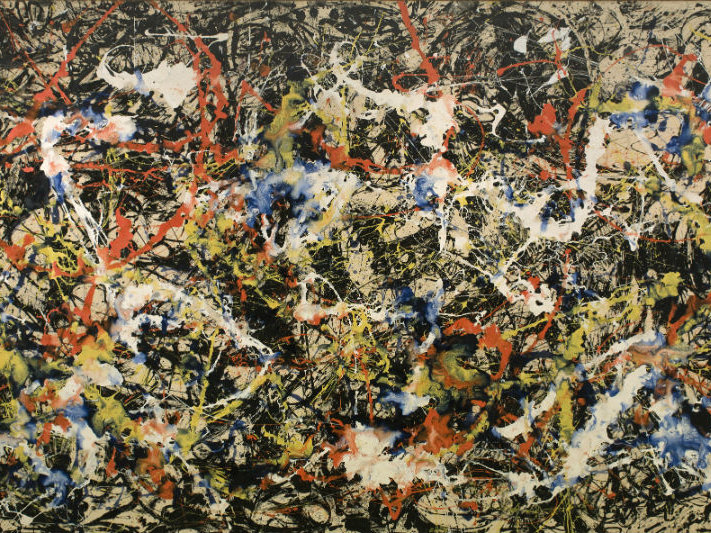Van Gogh. Picasso. Pollock. Warhol. Dali.
These aren’t just huge names to fans of art. These are cultural icons. And thanks to the new touring exhibition "Van Gogh to Pollock: Modern Rebels," those household names – amongst the works of many, many other influential figures in the history and evolution of modern art – will decorate the walls of the Milwaukee Art Museum throughout the summer.
The exhibit – opening today to the public and running through Sunday, Sept. 20 – comes courtesy of the Albright-Knox Gallery, located in the famous artistic hub … of Buffalo, New York. Don’t let the comparatively small town fool you, however; the museum’s collection of 20th century art is regarded as one of the most respected in the country.
"It’s not something that people generally outside of the field are aware of because Buffalo is a small city, and it’s not a big museum," said Brady Roberts, chief curator for the Milwaukee Art Museum. "When I was in graduate school, I studied abstract expressionism, so I knew this was this extraordinary collection.
"A little over three years ago, the director – Dan Keegan – and I went out to visit the director out there, Louis Grachos, and we saw they had just mounted this exhibition and they were preparing to put together the tour. We walked through the show and just said, ‘Wow, we have to have this; it would look so good in our Calatrava building.’"
The collection of almost 70 masterful and in many cases instantly recognizable works of art doesn't just serve as a showcase for famous names; the exhibit, organized in a loosely chronological order, tells the story of the evolution of modern art. Starting in the late 19th century with post-impressionism, "Modern Rebels" shows how art moved then toward cubism, then surrealism, then abstract expressionism and the pop art of those like Warhol and Lichtenstein. For those who may struggle with appreciating abstract art, the collection lays out an enlightening and consistently enthralling path that shows how it came to be and what each point on the journey was rebelling or contrasting against.
"It has an entry point that’s very easy for us, with post-impressionism and Fauvism, which in its day was very radical," Roberts said. "People had a hard time wrapping their head around Matisse and Derain and Picasso and Van Gogh back then, but now, we look at them and we see beautiful paintings. We understand the subjects as figures and landscapes. And this show kind of takes you through these chapters that bring you up to the invention of purely abstract language. You can see the story evolve, and I think people will give challenging paintings – like that Agnes Martin – a chance. It doesn’t come out of nowhere."
It’s a story told by "Modern Rebels" in vivid fashion, evolving not just in technique and in content – as pointed out by Roberts, one of the currents flowing through the collection especially in the earlier portions is the impact of the World Wars in artists, with some allowing their effects into their works and others, like Matisse, choosing to ignore them – but also in size, from the comparatively small early works of Van Gogh and Picasso into bold, larger canvases. It’s a transition anchored in part by Jackson Pollock’s beautiful and scoping 1952 splatter painting "Convergence," presented along with a video of Pollock at work.
"(Pollock) had such a brief moment and such a brilliant moment," Roberts said. "This is one of his all-time great paintings, and it’s just kind of a thrill to have it anchoring this exhibition. It’s kind of right in the middle, right at that moment where we spread out the gallery to give breathing room to these monumental canvases."
It’s almost startling to come face to face with such a massive and iconic painting – a sensation had continuously while walking through the gallery of familiar faces, like Warhol’s famed "Cans," Frida Kahlo’s "Self Portrait with Monkey," Gorky’s "The Liver Is the Cock’s Comb" and many, many more.
The often playful and consistently engaging exhibit then comes to a close with the 1960s, not only with pop art but also with a glimpse of a further evolution of modern art – away from the paint, brushstrokes and canvases that make up much of the "Modern Rebels" exhibit. The final work is Joseph Kosuth’s "Three Color Sentence," which is literally that: a neon tube display that says "Three Color Sentence" with each word glowing a different color.
"You look at something like this, and it’s a colorist painting … but this is pushing in a new direction," Roberts said. "This tells you that the story continues on. It didn’t wrap up. There’s no bookend. It will continue to go on. This just opens the page to the next chapter."
As much as it is a gigantic cliché to say that one has always had a passion for film, Matt Mueller has always had a passion for film. Whether it was bringing in the latest movie reviews for his first grade show-and-tell or writing film reviews for the St. Norbert College Times as a high school student, Matt is way too obsessed with movies for his own good.
When he's not writing about the latest blockbuster or talking much too glowingly about "Piranha 3D," Matt can probably be found watching literally any sport (minus cricket) or working at - get this - a local movie theater. Or watching a movie. Yeah, he's probably watching a movie.







